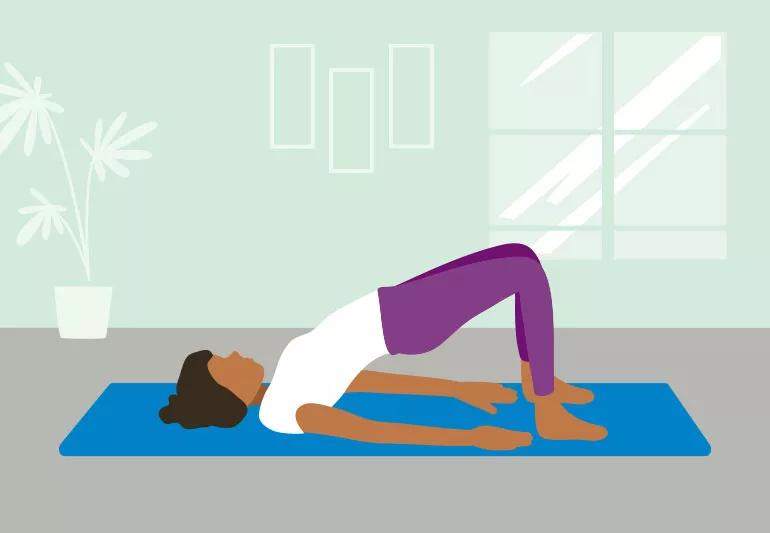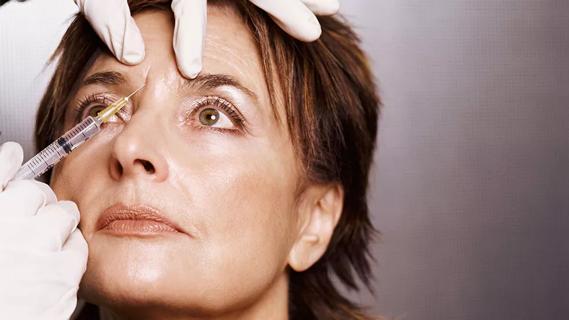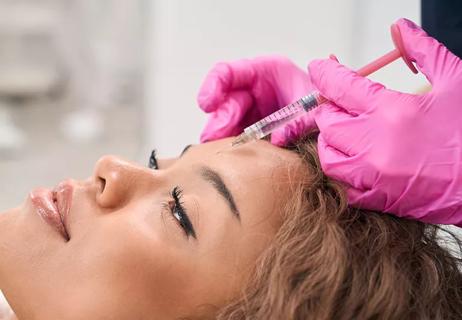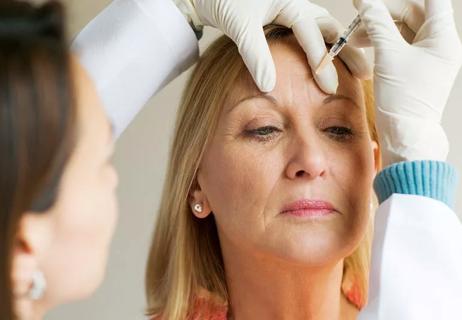Most recommended precautions center around minimizing bruising or swelling

You’ve done it: You’ve gotten Botox® injections (or maybe some other type of injections, like Dysport®) in your face. Whether you got them to smooth some wrinkles or to address a medical issue, you may feel like you need to be extra careful with your face.
Advertisement
Cleveland Clinic is a non-profit academic medical center. Advertising on our site helps support our mission. We do not endorse non-Cleveland Clinic products or services. Policy
You’ve got a dozen questions running through your head: Is it OK to put on makeup? To wash your face? To … crack a smile?! Cosmetic surgeon James Zins, MD, walks you through everything you need to know for proper injection aftercare.
Before we get into what you should and shouldn’t do after Botox, it’s important to know how you’ll feel post-Botox. In the immediate aftermath of your injections, you might experience some mild side effects:
“The side effects that can happen after Botox are really quite mild, but it’s still important to be aware of them,” he says.
Advertisement
You’ll probably leave your provider’s office with an ice pack or a cool compress to tackle these immediate side effects like redness, swelling and soreness, and to prevent bruising.
But for the most part, Dr. Zins says that you’ll get your injections and be on your way — no negative side effects to be found.
“Usually, you come in, you have it done and you go about your business,” he says. “There’s no downtime afterward because of pain or any other issues.”
You also won’t see the desired effect of your Botox injections right away. They can take anywhere from a few days to a week to appear.
For the most part, you can go back to your regular life almost immediately after your injections. Though there’s a lot of internet chatter about what you should and shouldn’t do after being injected, Dr. Zins says that if your injections are done properly, almost no special aftercare is required.
But there are a few best practices to abide by:
In general, Dr. Zins says that most lists of post-Botox do’s and don’ts are based more on your comfort than on the likelihood of something going wrong.
“There are a lot of myths out there, as far as aftercare is concerned,” he continues, “but most of the untoward effects we might see with Botox are because of poor technical injection, not because the patient has done anything wrong.”
Touch, yes; rub, no. For the first 24 hours or so, avoid rubbing the spots where you’ve been injected, which could cause the Botox to move slightly from its intended location.
“We ask people not to massage the area because we don’t want to diffuse the Botox,” Dr. Zins says.
Facials and massages involve rubbing and, well, massaging, so wait at least 24 hours after your injections to schedule that type of self-care. If you have bruising or swelling, you may want to wait longer, for your own comfort.
Your Botox is not the Wicked Witch of the West, and it will not melt away in water. It’s OK to wash your face after you’ve received injections — just do so lightly at first, so you don’t rub the affected area (see above) or contribute to any bruising or swelling.
Some healthcare providers say you should avoid physical activity for at least 24 hours after you’ve gotten injections, but Dr. Zins says there’s little evidence to show that physical activity affects how your Botox settles.
Advertisement
“People are told not to exercise or even bend down after they’ve had injections,” he says, “it really has nothing to do with the possibility of complications.”
Exercise can raise your blood pressure, which can increase bruising, so you may want to avoid it for a few hours if you tend to bruise.
After you’ve had a few needles stuck in your face, you might feel a little nervous about ... well, moving your face. But feel free to be as expressive as you usually are.
“Moving your face is not going to affect Botox,” Dr. Zins confirms.
Some people claim that moving your face after getting injections can actually help your Botox work better, though studies show mixed results. In one study, 68% of participants felt that performing facial exercises sped up the results of their injections.
“We don’t have any data to prove that moving your face will make Botox absorb faster or better,” he continues, “but it’s certainly OK to move your face as you normally would.”
There’s no set timeframe to how long you should wait after injections to apply makeup, lip balm or anything else you’d normally put on your face.
“They can really be used anytime,” Dr. Zins says, though it’s best to wait until the injection site has fully closed (which only takes about 15 minutes). You may also want to wait until any swelling or irritation has gone away.
Advertisement
And just be careful with your application, making sure you don’t harshly rub the area where you’ve been injected.
Botox is generally considered very safe, and serious side effects are rare. But seek medical attention immediately if you experience:
It’s more common — though still considered rare — to experience issues like a drooping of your eyelid or eyebrow.
“There is both science and art involved in giving Botox injections,” Dr. Zins says. “If your provider inadvertently injects into a muscle they don’t mean to inject, you may see these untoward effects.”
But there’s an upside: Because the effects of Botox injections are only temporary effects, so are most complications.
“Once the Botox is stopped, the muscles will relax and go back to their normal size and function,” he explains.
He also reiterates that drooping problems are almost always the fault of the provider and not related to anything a patient does after being injected — which drives home how important it is to choose the right person to perform your Botox injections.
Advertisement

Learn more about our editorial process.
Advertisement

Most recommended precautions center around minimizing bruising or swelling

With repeat injections over time, you may be able to slow the development of new wrinkles

The cosmetic injection may help train your muscles out of frowning, but there’s no hard data to say for sure

One reduces wrinkles by relaxing muscles; the other adds volume and smooths skin

The big difference with this procedure is the smaller dosing

Both are used to treat fine lines and wrinkles

This drug has therapeutic uses, too

They both treat fine lines and wrinkles, but how they’re made and how long results last differ

Type 2 diabetes isn’t inevitable with these dietary changes

Applying a hot or cold compress can help with pain